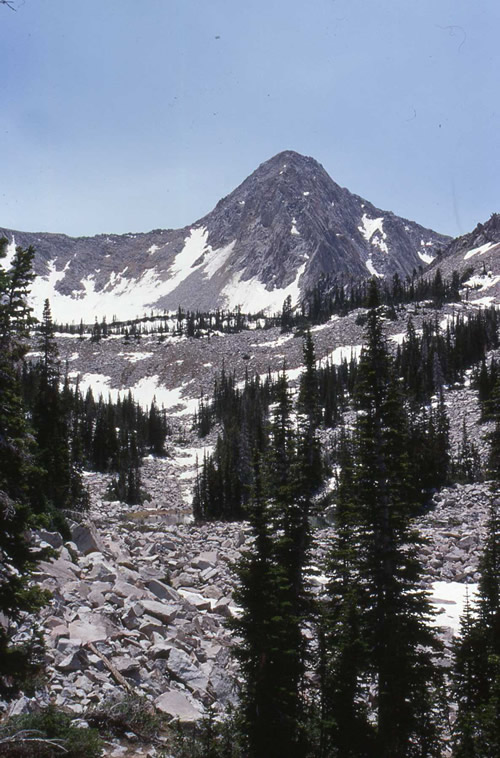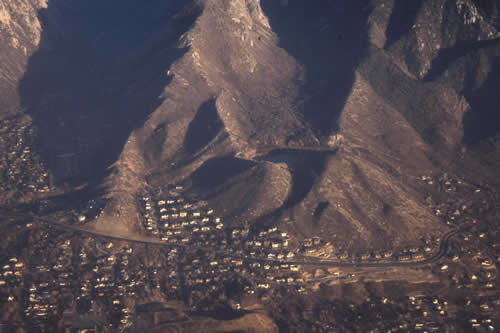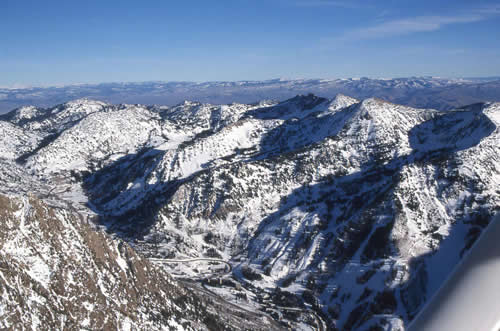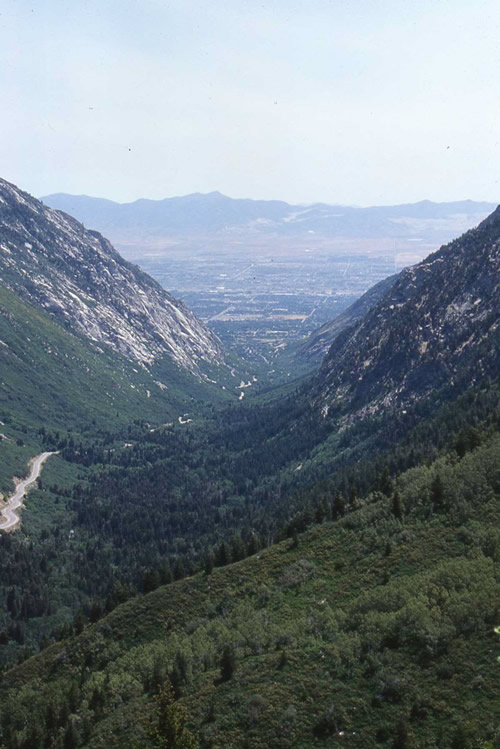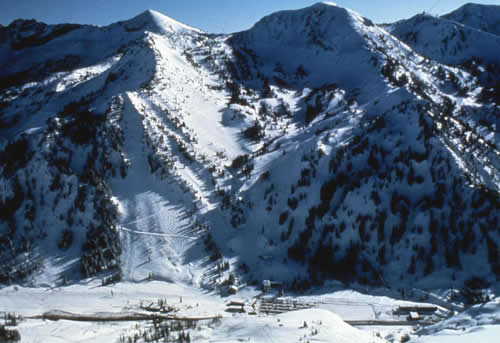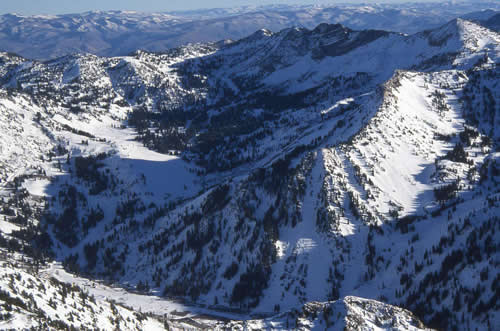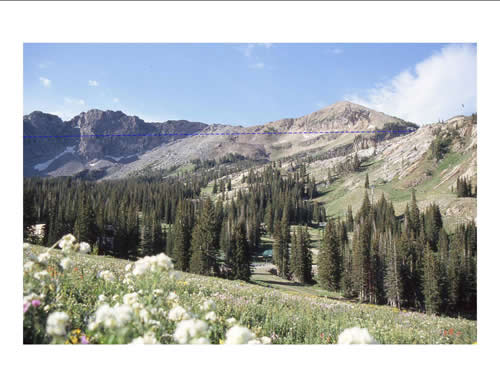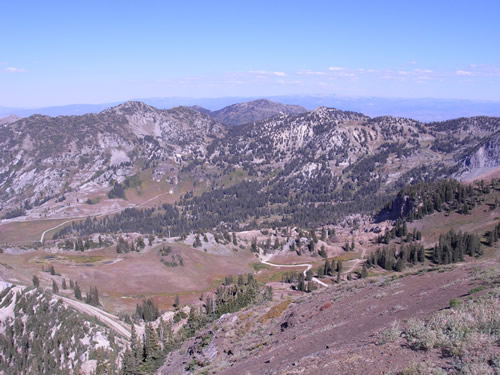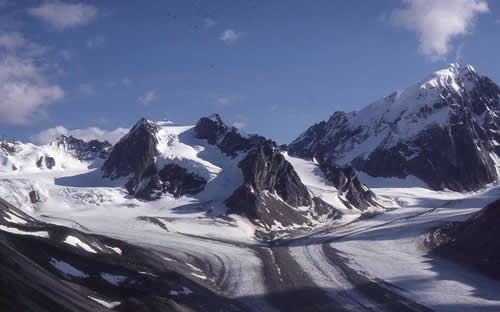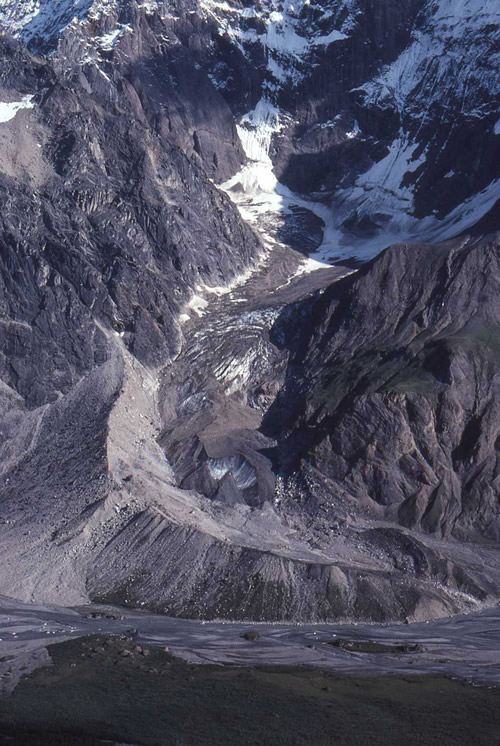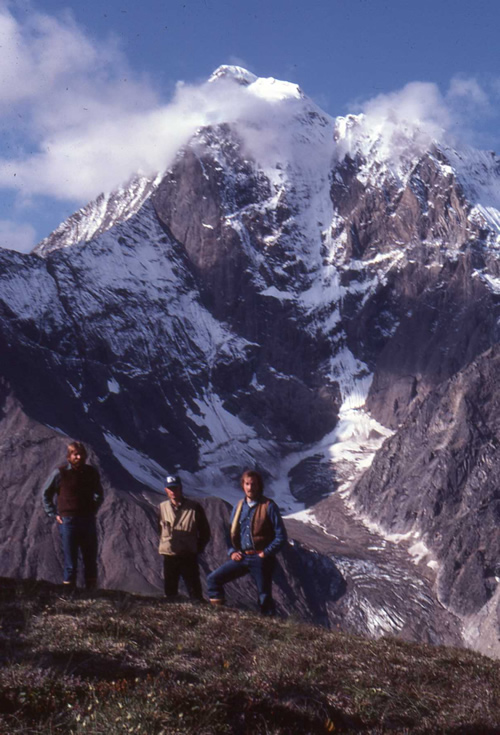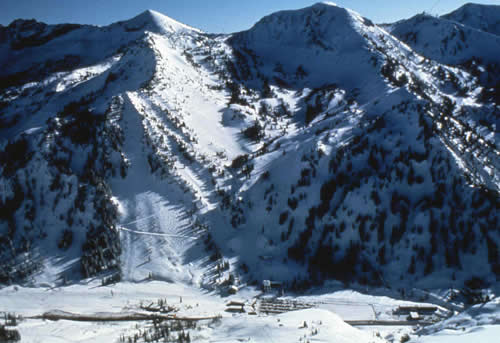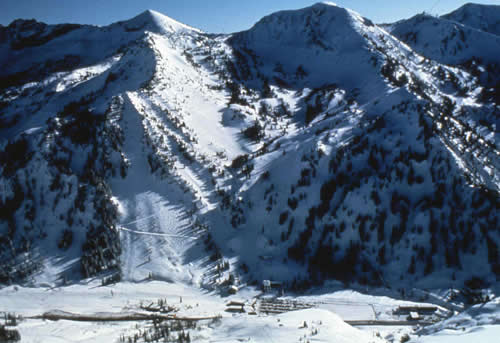There is no Matterhorn at Alta. The Pfeifferhorn, a smaller version of its famous cousin was formed at the head of Maybird Canyon five miles west of Alta. Glaciers had begun carving away at the sides of Sugarloaf Peak, forming a pyramid shape but had not eroded it to a point.
The prominent surface features created in the glacial environment, cirques, U-shaped valleys, hanging valleys and headwalls are concave in shape. Concave slopes are very steep at the top, in some cases nearly vertical and become gentler towards the bottom, ending in long flat run-outs. This is good for skiing because it gives the skier a variety of slope options; the higher you enter the slope, the more demanding the terrain. The traverses at Alta access the ski slopes at different elevations giving the skier this option. But the concave shape is also critical in preserving snow quality. All of the headwalls above the cirques at Alta are north facing. As a result, the ski slopes beneath Devils Castle, Sugarloaf Peak and Mt. Baldy stay in the shade during much of the ski season. This keeps the snow cold, maintaining outstanding, soft, snow quality even during long periods between storms
The same is true in the north facing, concave slopes on the south side of Little Cottonwood Canyon. High Rustler, Eagles Nest, North Rustler, Collins Face, Bear Paw, and Westward Ho are all examples of steep, north facing concave slopes with excellent snow quality throughout most of the ski season.
| The Pfeifferhorn at the head of Maybird Canyon. |

